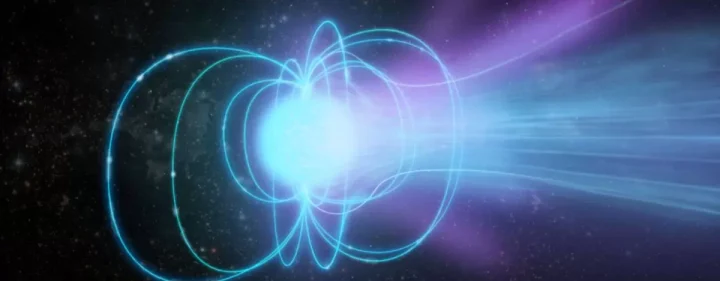A team of international astronomers using the Very Long Baseline Array (VLBA), part of the U.S. National Science Foundation National Radio Astronomy Observatory (NRAO), have gathered the most precise and detailed position and velocity measurements yet recorded for the youngest and fastest known nearby magnetar, Swift J1818.0-1617. These new measurements may help illuminate the mysterious conditions under which magnetars form.

An artist’s illustration of a magnetar, a highly magnetic neutron star. An international team of astronomers used the U.S. National Science Foundation National Radio Astronomy Observatory’s Very Long Baseline Array to determine key characteristics of a nearby magnetar.
Image Credit: NSF, AUI, NSF NRAO, S. Dagnello.
Magnetars are the result of a particularly high-mass star collapse that causes a supernova explosion and initiates formation conditions for a neutron star. Neutron stars that develop a strong magnetic field — typically thousands of times stronger than a “regular” neutron star — are classified as magnetars, which are considered the most magnetic objects in the universe.
“These new observations, made possible by the high-resolution capabilities of the VLBA, allow detailed study of magnetars and provide a better understanding of these extreme objects,” says Joe Pesce, NSF program director for NRAO.
From the 10 telescopes that make up the NSF VLBA, scientists used radio interferometry and the parallax method to triangulate the precise location and transverse velocity for Swift J1818.0-1617, which was first detected in 2020.
Determining the specific location of this magnetar — one of only 30 ever discovered — may also help scientists build a better model for understanding where magnetars tend to occur in spiral galaxies, lending more insight to their origins.
Source: NSF

